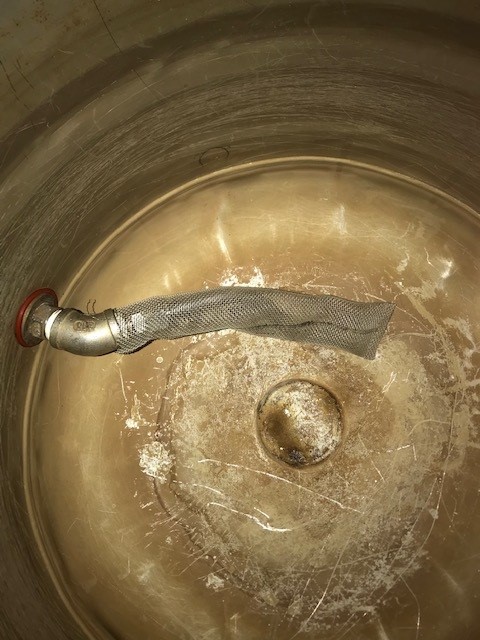ringneck
Member
Hi all, Started brewing a couple decades ago, but haven't brewed for last few years. Always used Gravity for transfers from BK to fermenter. Never had a problem with getting all of the wort out of my brew kettle through a bazooka screened dip tube previously.
I got a new system which includes pumps, so Monday night I re-entered the brewing game partially using this new set up. I've run into 2 problems I've never had before
Instead of using gravity to empty my brew kettle, I ran the BK output into the pump, and then pumped through a new CFC into my fermenter. Same BK, screen & dip tube as before.
BK valve fully open, pump input valve fully open, pump output valve fully open (made sure it was primed) and I used the CFC output valve to throttle flow so the exit temp was 70*
Worked great until the wort level was down to the BK output valve level. At that point, it stopped transferring wort and it left at least a gallon in the BK, probably more.
Let's pretend for a minute that I had remembered to close the output valve on my fermenter, and didn't dump 1/2 gallon of wort on the floor before noticing. (chalk it up to shaking off the rust from not brewing in a while)
Bottom line, is I only got ~3 gallons in the fermenter. It's a 6.5 gallon anvil fermenter, so there is a ton of headspace. I'm not seeing any blowoff or activity.
so 2 questions:
am I not seeing external activity simply because there's so much head-space?
Is there any reason that the dip tube would stop picking up because the pump was slowed down too much? Is there some difference in how I need to empty the kettle with a pump vs gravity?
My working assumption is that I'm getting air in the dip tube assembly somewhere and broke the siphon so-to-speak, but I tightened everything up way tight, and I've never had a problem with this before.
thanks for any tips or suggestions
I got a new system which includes pumps, so Monday night I re-entered the brewing game partially using this new set up. I've run into 2 problems I've never had before
Instead of using gravity to empty my brew kettle, I ran the BK output into the pump, and then pumped through a new CFC into my fermenter. Same BK, screen & dip tube as before.
BK valve fully open, pump input valve fully open, pump output valve fully open (made sure it was primed) and I used the CFC output valve to throttle flow so the exit temp was 70*
Worked great until the wort level was down to the BK output valve level. At that point, it stopped transferring wort and it left at least a gallon in the BK, probably more.
Let's pretend for a minute that I had remembered to close the output valve on my fermenter, and didn't dump 1/2 gallon of wort on the floor before noticing. (chalk it up to shaking off the rust from not brewing in a while)
Bottom line, is I only got ~3 gallons in the fermenter. It's a 6.5 gallon anvil fermenter, so there is a ton of headspace. I'm not seeing any blowoff or activity.
so 2 questions:
am I not seeing external activity simply because there's so much head-space?
Is there any reason that the dip tube would stop picking up because the pump was slowed down too much? Is there some difference in how I need to empty the kettle with a pump vs gravity?
My working assumption is that I'm getting air in the dip tube assembly somewhere and broke the siphon so-to-speak, but I tightened everything up way tight, and I've never had a problem with this before.
thanks for any tips or suggestions



















































![Craft A Brew - Safale S-04 Dry Yeast - Fermentis - English Ale Dry Yeast - For English and American Ales and Hard Apple Ciders - Ingredients for Home Brewing - Beer Making Supplies - [1 Pack]](https://m.media-amazon.com/images/I/41fVGNh6JfL._SL500_.jpg)








